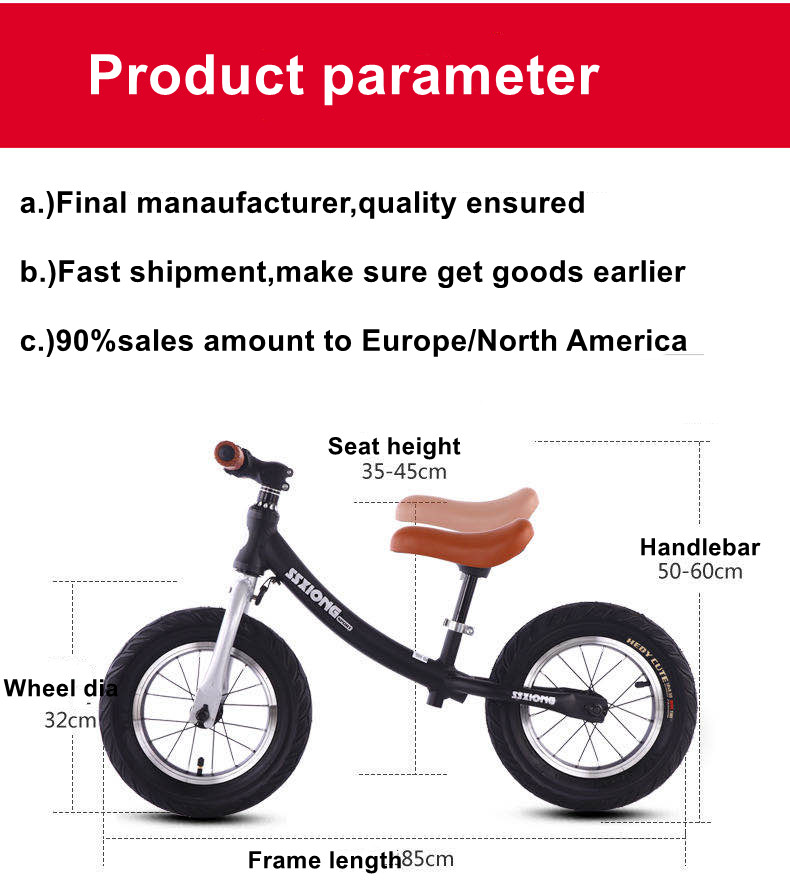how to teach a kid to balance on a bike
How to Teach a Kid to Balance on a Bike
Teaching a child to ride a bike is a cherished milestone for both parents and children. It’s a rite of passage that signifies growing independence and confidence. However, one of the most challenging aspects of learning to ride is mastering the balance required to stay upright. Here are some effective methods to teach a kid how to balance on a bike, along with tips to make the learning process enjoyable and successful.
1. Choosing the Right Bike
Before starting the lessons, ensure that your child has the appropriate bike. A bike that is too big will make it difficult for them to manage and balance. Your child should be able to place their feet flat on the ground when sitting on the saddle. Consider removing the training wheels, as they can create a false sense of security and hinder the development of balance.
2. Safety First
Before any riding occurs, safety is paramount. Equip your child with a properly fitting helmet to protect their head. Additionally, consider knee and elbow pads, especially for beginners who may experience falls. Make sure to choose a safe and open area for practice, such as an empty parking lot or a quiet park, where there’s plenty of room for movement without the risk of traffic or obstacles.
3. Start with Balance Exercises
Balance is the key to riding a bike. To help your child develop their balancing skills, consider starting with balance exercises. One effective method is to have your child scoot on the bike with their feet on the ground instead of pedaling. Encourage them to push off the ground with their feet and glide, allowing them to feel the bike’s movement without worrying about pedaling yet.
To make the process fun, turn it into a game. Have them see how far they can glide without touching the ground or add a challenge by setting up cones or markers to practice weaving. These activities help build confidence and improve balance gradually.
Once your child feels comfortable balancing while gliding, it’s time to introduce pedaling. Have them start by placing one foot on a pedal while the other foot remains on the ground. Encourage them to push off with the grounded foot to gain momentum. Once they’re moving, they can place the other foot on the pedal and start pedaling.
how to teach a kid to balance on a bike

During this stage, provide encouragement and support. Stand alongside them and hold the back of the seat gently, giving them a slight push for balance if necessary but avoiding too much contact. This helps your child feel secure while they learn to navigate their balance while pedaling.
5. Practicing Starts and Stops
Teach your child how to start and stop safely. Explain the importance of looking ahead and using their brakes properly. Encourage them to practice stopping by using their feet to catch themselves if they lose balance. Understanding how to start and stop effectively builds their confidence and safety awareness.
6. Emphasize Looking Ahead
One of the common mistakes beginners make is looking down at the tires instead of looking ahead. Remind your child to keep their eyes trained on the horizon. This simple adjustment helps them maintain balance and control of the bike. Encourage them to focus on where they want to go, allowing their body to naturally align with their movements.
7. Celebrate Progress
Learning to ride a bike is a significant achievement. Celebrate every small victory to keep their spirits high. Whether it’s gliding longer distances, successfully pedaling, or mastering starting and stopping, provide positive reinforcement. Acknowledge their efforts and ensure they know that practice is key to becoming a proficient rider.
8. Gradually Increase Challenges
As your child’s confidence grows, gradually introduce new challenges to enhance their skills. You can encourage them to ride on different surfaces, go downhill, or navigate gentle turns. Allow them to explore while you supervise, ensuring they feel supported yet challenged.
Conclusion
Teaching a kid to balance on a bike can be a rewarding journey filled with laughter and learning. By providing the right environment, safety gear, and a patient guiding hand, you can help your child conquer this exciting skill. Remember to celebrate their achievements and make the experience enjoyable. With perseverance and practice, they’ll soon be riding confidently, eager to explore the world on two wheels!
-
The Perfect Baby TricycleNewsAug.11,2025
-
Ride into Fun with Bikes for KidsNewsAug.11,2025
-
Ride into Adventure with the Perfect Kids Balance BikeNewsAug.11,2025
-
Fun and Safe Riding with the Best Childrens ScootersNewsAug.11,2025
-
Find the Perfect Childrens Bike for Your Little OneNewsAug.11,2025
-
Explore the Best Baby Tricycles for Your Little OneNewsAug.11,2025
-
Three-Wheel Light-Up Scooter Benefits for KidsNewsJul.11,2025








